Wallace Chan is the first Asian jewellery artist to exhibit at the GIA headquarters (Carlsbad, 2011), Biennale des Antiquaires (Paris, 2012 & 2014), The European Fine Art Fair (TEFAF) (Maastricht & New York, 2017 & 2016) and Masterpiece London (2016). Since founding his gemstone carving workshop in 1974 at the young age of 17, Wallace Chan has continued innovating jewellery as art. Recently we had a conversation with Wallace Chan to talk about the stories behind his creations and take a glimpse into his philosophical world.
Chan’s destiny has been intertwined with gemstones for over 40 years. He started with carving into precious gemstones, and gradually he transformed those carved gems into wearable pieces. He then began to study techniques such as setting and polishing. He treated jewellery as mini sculptures, and this method gives Chan’s pieces a unique touch. They can be appreciated in 360 degrees, while in ordinary jewellery, the backs or bottoms are usually neglected.
“I have so much passion for art and creation,” he said. “When I make jewellery, I become the gemstone, and the stone is me. Through the process of layering and changing, over and over again, jewellery has slowly become the carrier of my spirit, emotions, and craftsmanship.”
In 1987, Wallace Chan created the ‘Wallace Cut’, which brought him worldwide fame. He recalculated the existing gem faceting techniques and added an intaglio to a piece which was already considered as perfect by many. The intaglio on the gem uses reverse thinking, the deepest part the eyes see is carved the shallowest, and left is actually right. To practice this technique, which is all about communicating with light and gemstone, Wallace Chan said, “I needed to ignore my own being.” One of the masterpieces that use the ‘Wallace Cut’ is the pendant ‘Now and Always’ which pays homage to the Greek goddesses of the seasons, Horae.
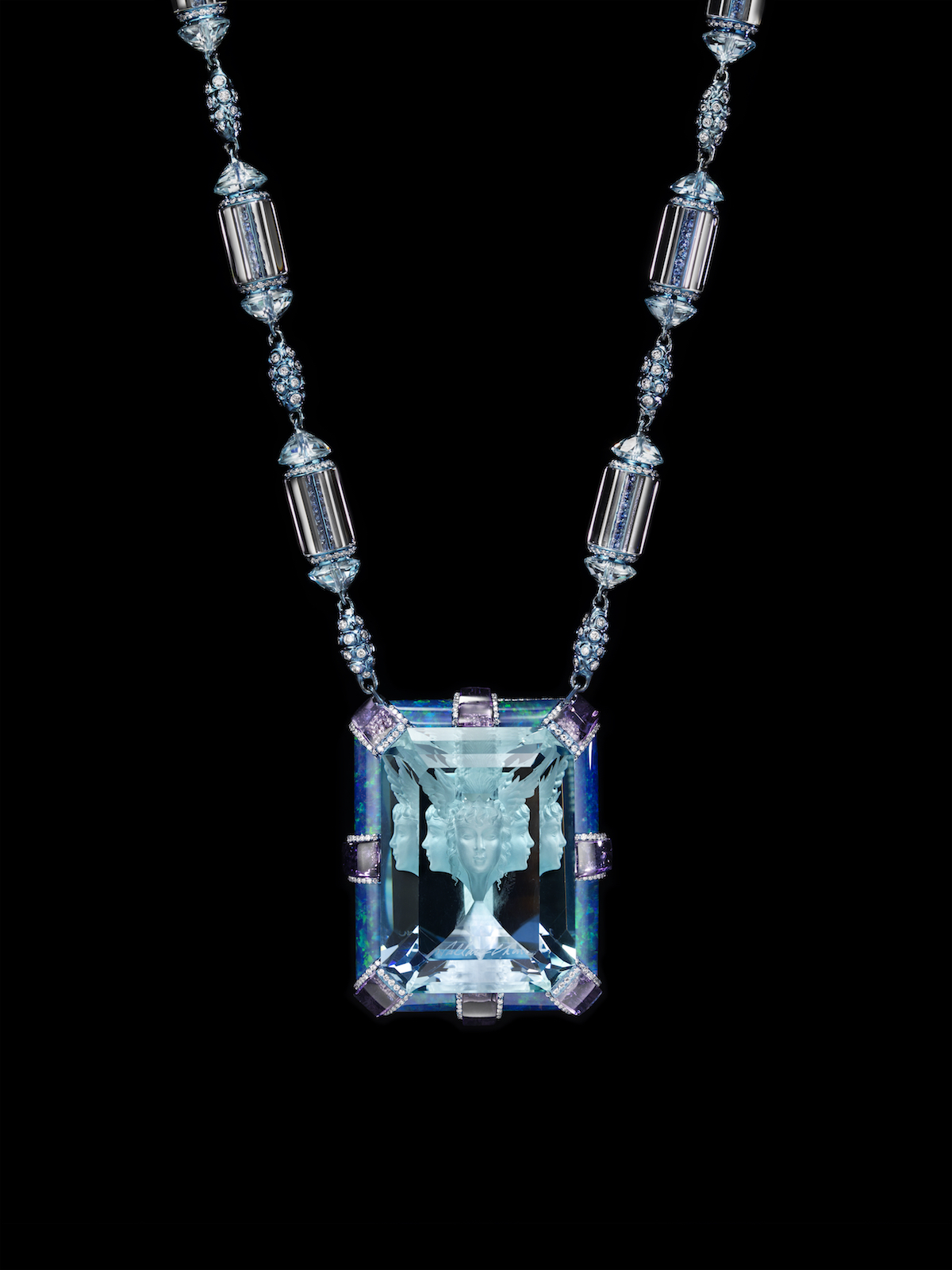
Now and Always
In the early stage of his carving career, Wallace Chan was very much inspired by Michelangelo. Through imitation, he discovered the secret to Michelangelo’s sculpture: Michelangelo expressed human bodies in an abstract form and distorted the normal muscle structures so that the reflection of light on opaque marble could accentuate the contours of the body to achieve a vivid depiction. This realisation prompted Wallace Chan to pay extra attention to how the light moves and reflects and how that affects the colour distribution in gemstones, before innovating gemstone cutting techniques.
Wallace Chan thinks every gemstone has a personality; hence he does not have a particular fondness for certain types. Free from the constraints of gemstone choices, he never ceases seeking ‘change’ in design and making, experimenting with different forms, colours and levels of transparency.
He told us, “I’d like to explore the unexpected within the known. I look at materials from my intuition. I don’t create something from just one aspect. Instead, I prefer to have an overall view and sometimes cross the boundaries. Anything can be used to communicate my expressions. Gemstones, wood, metal, colours and structures all work together to a final breakthrough.”
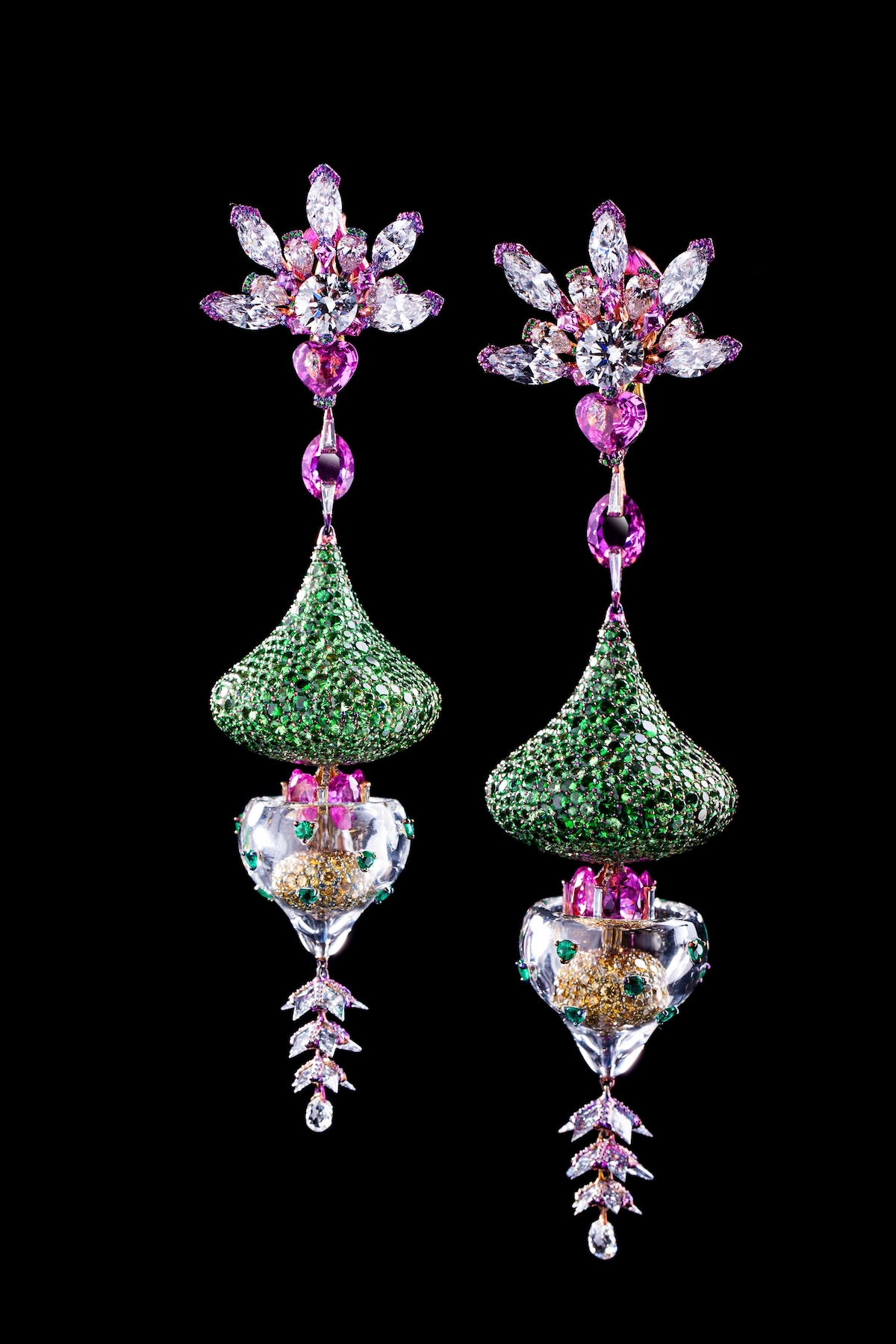
Wonders of Life
We can see various sources of inspiration in Wallace Chan’s work, from Greek mythology, Chinese historical tales, nature and Buddhism. But how did he find inspiration? Chan told us he no longer searches for inspirations as he used to because it is hard to leave your memories behind and “you can’t search for real creativity.” When Wallace Chan looks at a gemstone, some of his forgotten memories appear; that may be where his inspiration comes from now.
Wallace Chan described creating a piece of jewellery as a Buddhist practice, “Through the process of perfecting a piece over and over again, I forget about the original colours, forms and my knowledge from the past. When I reach a state of almost memory loss, some incredible imagination will appear. And that can be a source of inspiration. At that time, there’s no me, and there’s no gemstone. When coming back to real life, the piece would probably be a representation of myself.”
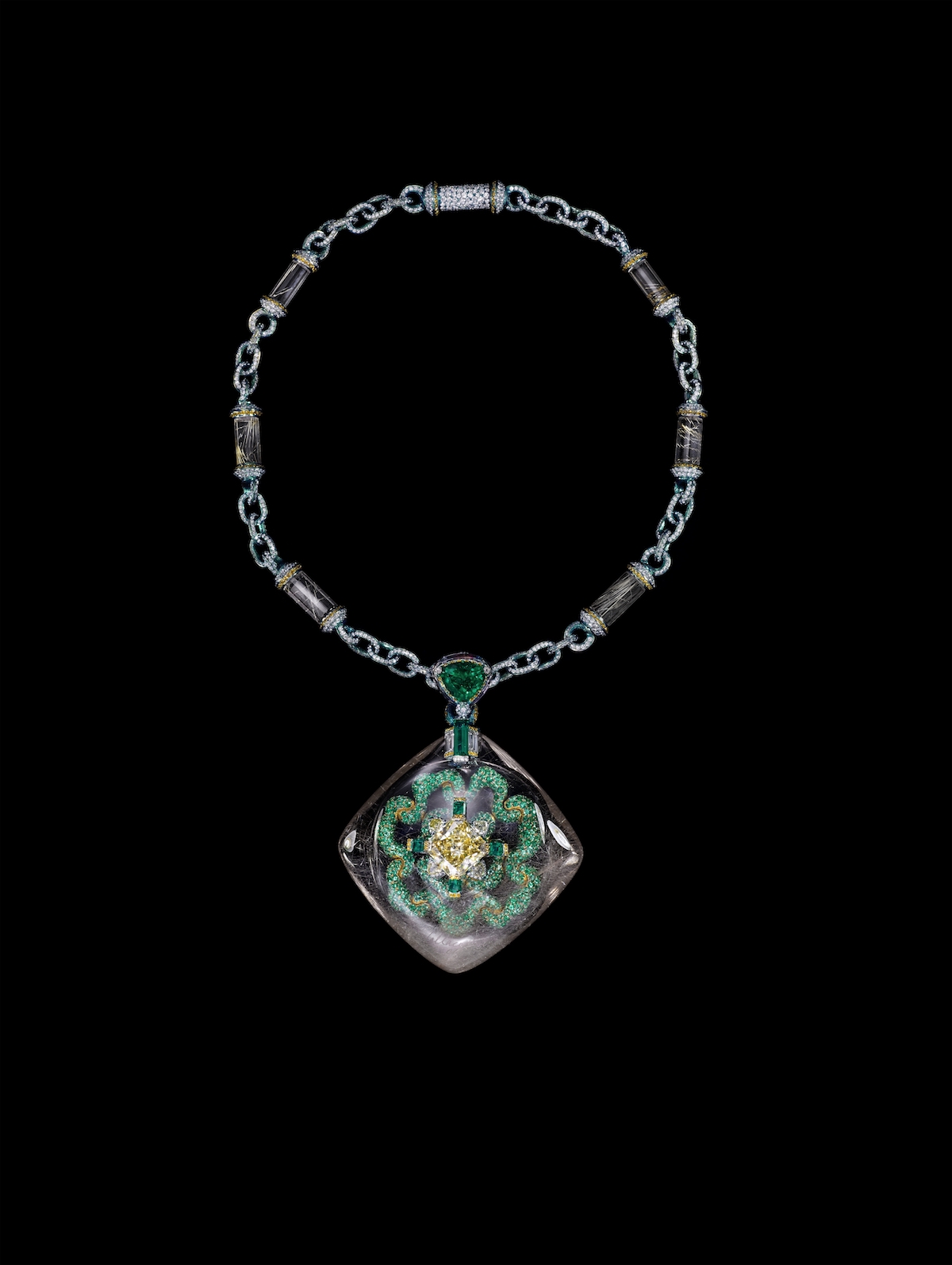
Secret Abyss
Secret Abyss, which took ten years to finish, is another innovation by Wallace Chan. He emptied space inside a single piece of rutilated quartz, and through the 6.5mm opening, he internally set 1,111 emeralds.
The inspiration behind the piece is a few words from Buddhism about how voidness can bring wonders — true emptiness is wonderful existence. Wallace Chan explained that if you can ‘empty’ your heart, you can have the whole universe; otherwise when you always keep knowledge and prejudice from the past, there will be no room for new wonders.
Since Wallace Chan’s works are often associated with Chinese culture and even Buddhism, it makes one wonder: how can he successfully convey those ideas to the global audience? Wallace Chan shared an interesting story. Cicada, which has the same pronunciation as ‘zen’ in Chinese, has become one of his favourite subject matters. However, when his 'Stilled Life' was on display in different parts of the world, people from non-Chinese background would often ask, “What kind of insect is that?” He then had to explain the cultural stories and metaphors behind this insect such as why jade and cicada usually appear together or how jade symbolises nobility in Chinese culture.
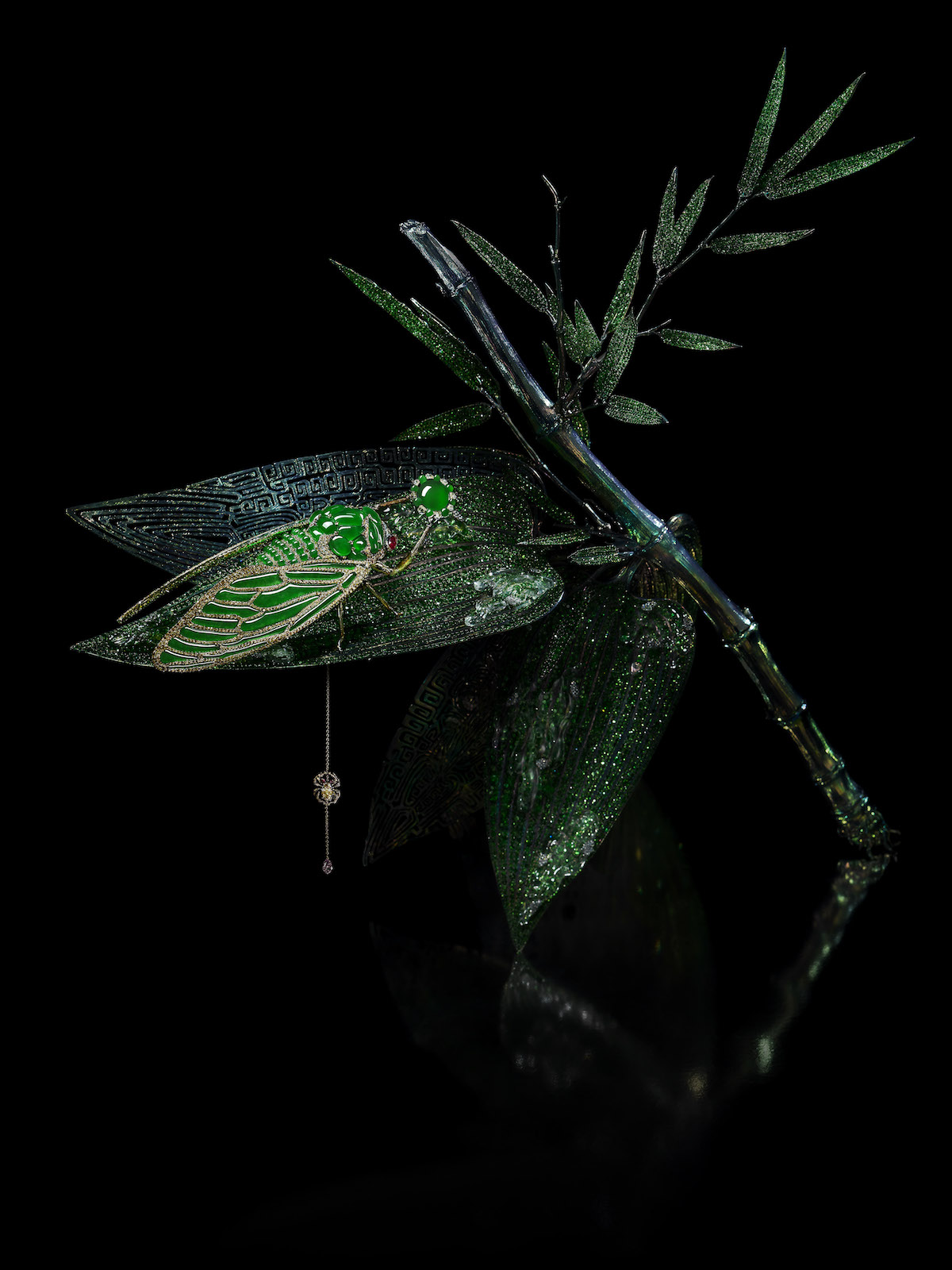
Stilled Life
Wallace Chan thinks that culture, no matter where it is from, belongs to all humankind. He said, “We shouldn’t label culture as Chinese, Eastern, or Western. We should all be learning from others, be creative and inspire the future.”
That is true. Even if some people do not know cicada and its stories, they will still be impressed by the remarkable form and colours of ‘Stilled Life’, then maybe try to understand the meaning afterwards.
Titanium mastery is Wallace Chan’s other innovation, which has featured extensively in his creations. Traditional jewellery making uses materials like gold, platinum, silver, copper and iron which are sometimes heavy-weighted and uncomfortable to wear. This troubled Wallace Chan.
In the 1980s, he read in the news that pacemakers are made of titanium, because the metal is lightweight, durable, hypoallergenic, therefore the best material to integrate with the body. From then on, he was determined to tame titanium and use it for structural support in jewellery, even though he faced numerous unforeseen struggles and failures. After eight years, he finally accomplished the mission and thought that this technology should belong to all people. At Baselworld 2007, he showcased jewellery creations featuring titanium for the first time. After further improvement in his mastery of titanium, he revealed the revolutionary technology in a press conference at Hong Kong International Jewellery Show in 2011 and called for its adoption in jewellery. Nowadays, there are more and more craftsmen, designers and artists using titanium in their jewellery making.
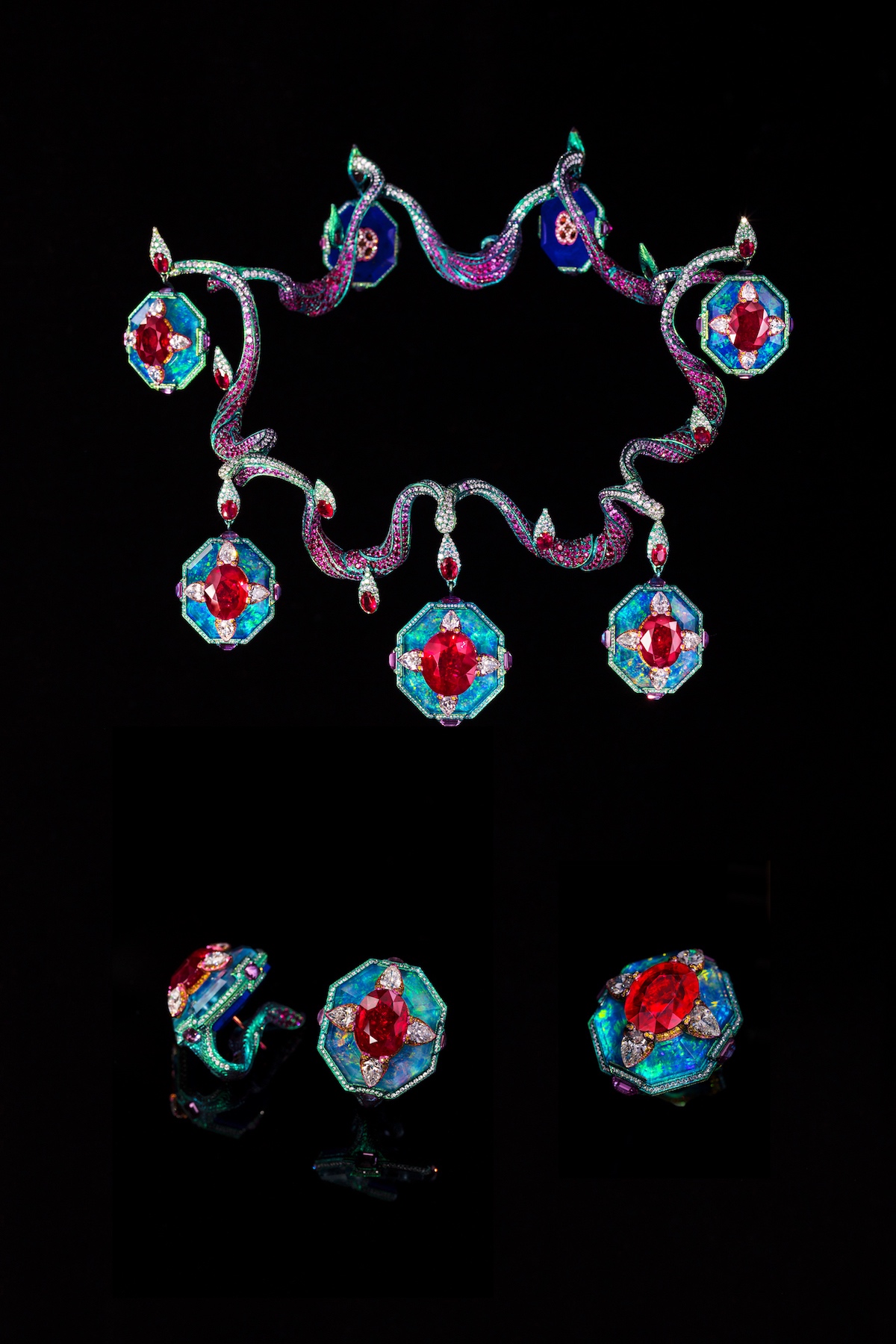
Music on My Mind
The aesthetics of the jewellery is comparable to the visual poetry of a cadenza, or an ornamental documentation of a musician’s improvisation. Lights, colours and shapes twist together to resemble an elegant dance to a beautiful tune.
The distinctive, winding shape of 'Music on My Mind' is made of titanium, adapting to different body shape automatically. Wallace Chan always incorporates his knowledge in mechanics, modelling and ergonomics into jewellery, so that the pieces are not only beautiful and dramatic but also comfortable to wear.
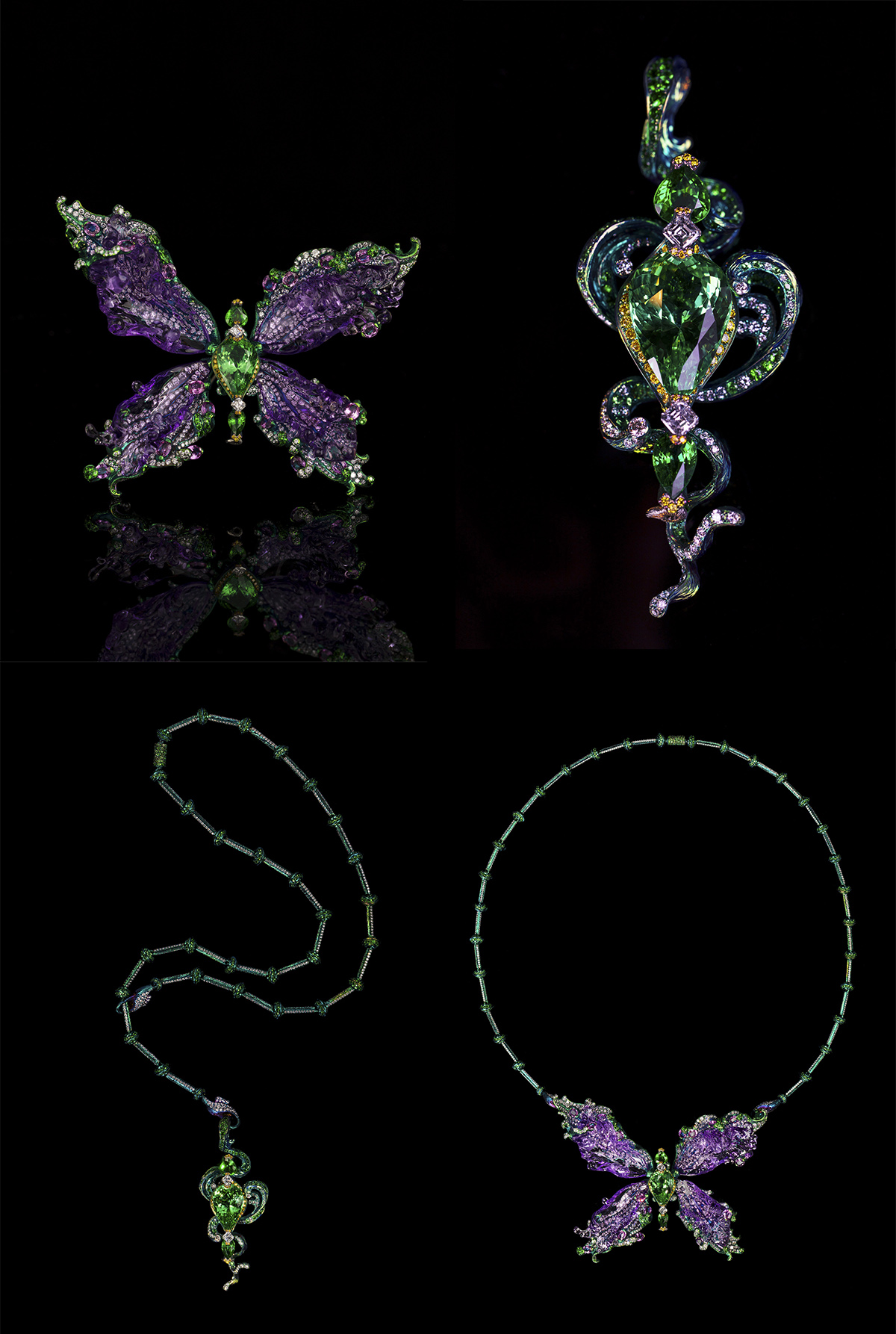
The Waves
This piece can be worn in eight different ways. Sometimes it looks like a butterfly; sometimes it is like waves or wind.
Wallace Chan told us the story: “I felt the change in the air when a butterfly flew away. I wanted to interpret the waves of sound, the waves in the air, and the changes in light generated by this movement through colours and craftsmanship, even though they are very subtle.”
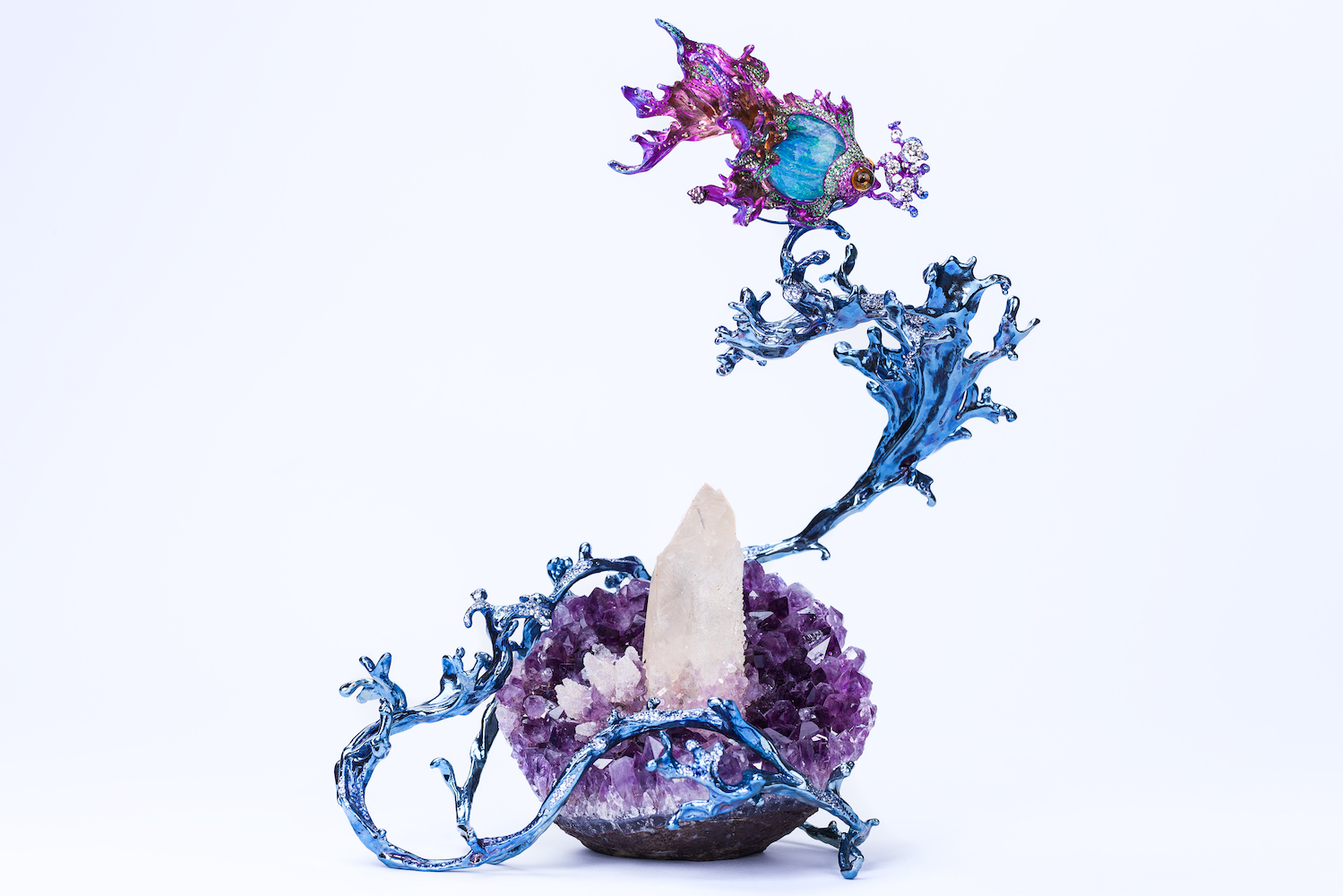
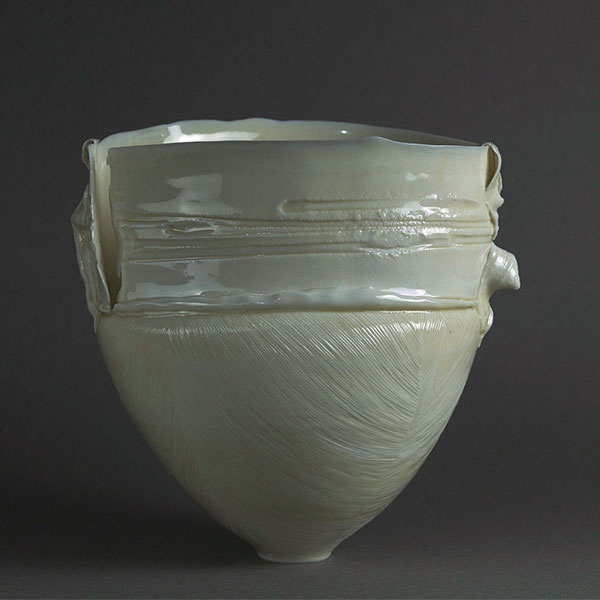
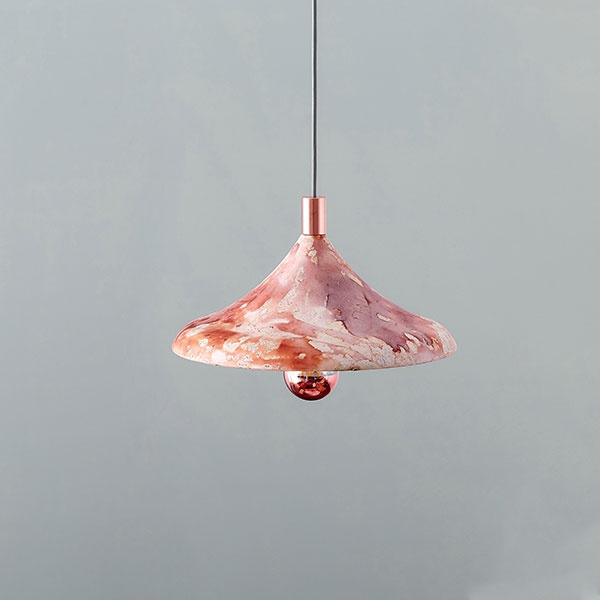
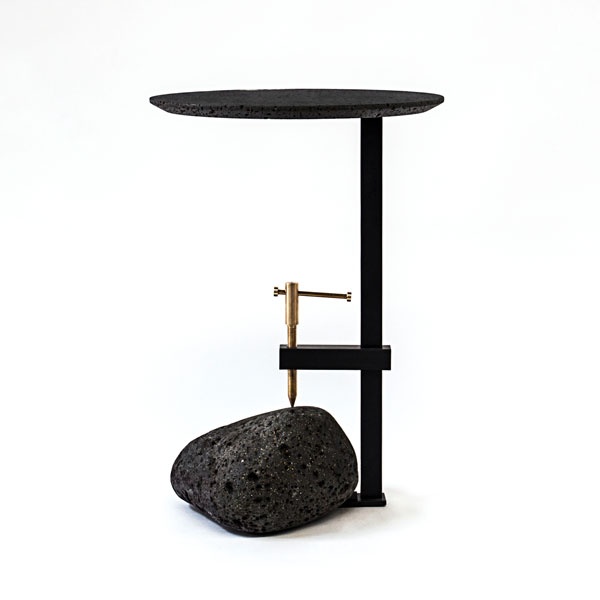
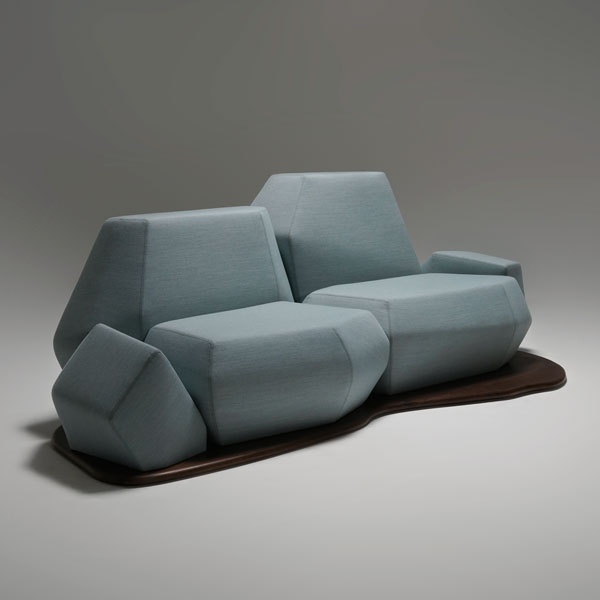
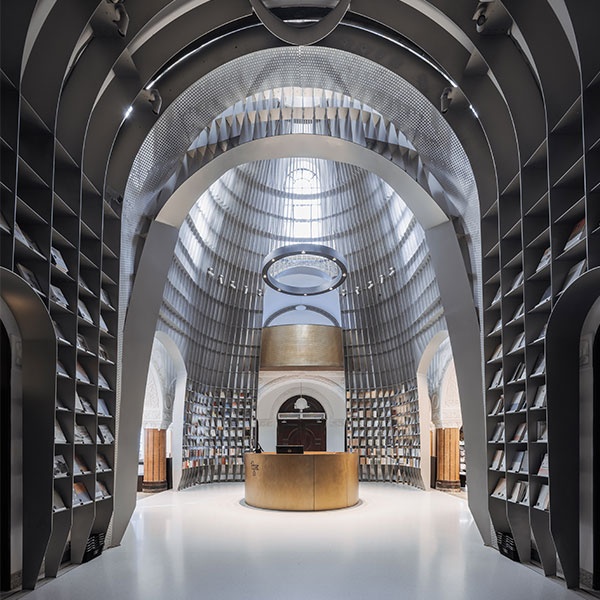
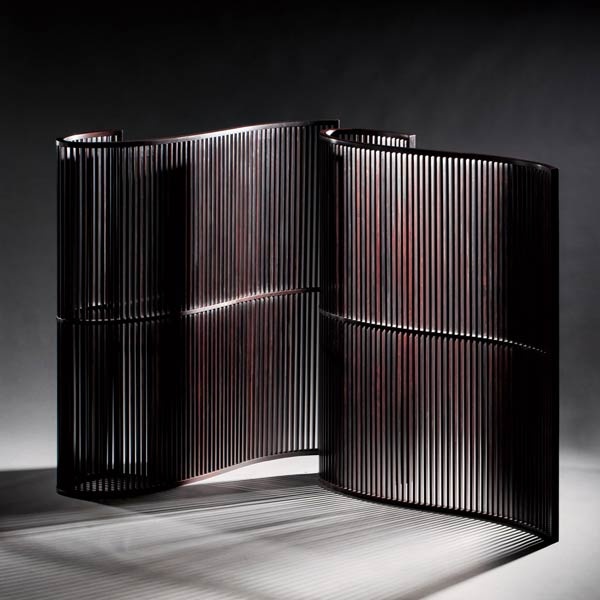

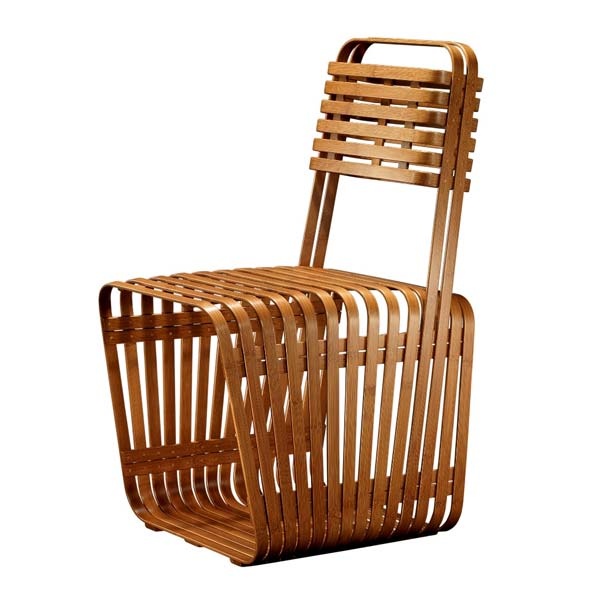

1 / 31
show thumbnailsnext picture previous picture start slideshow close lightbox